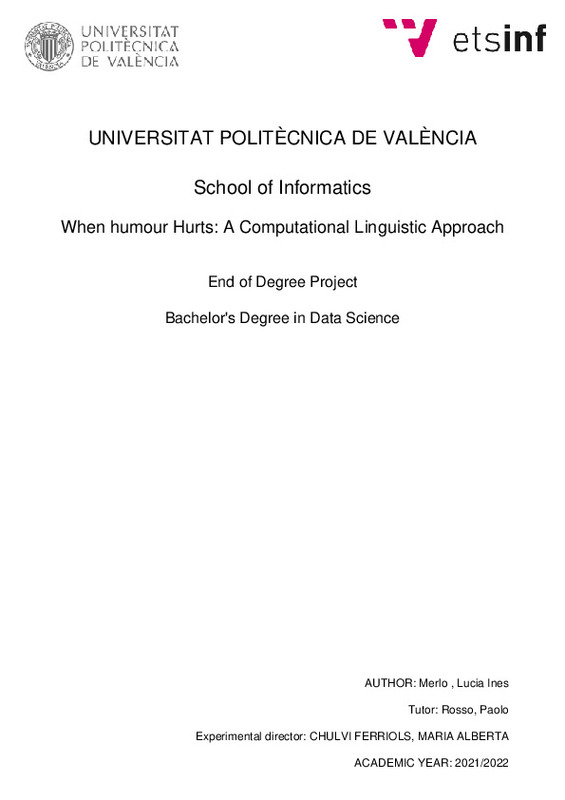JavaScript is disabled for your browser. Some features of this site may not work without it.
Buscar en RiuNet
Listar
Mi cuenta
Estadísticas
Ayuda RiuNet
Admin. UPV
When humour Hurts: A Computational Linguistic Approach
Mostrar el registro completo del ítem
Merlo, LI. (2022). When humour Hurts: A Computational Linguistic Approach. Universitat Politècnica de València. http://hdl.handle.net/10251/188166
Por favor, use este identificador para citar o enlazar este ítem: http://hdl.handle.net/10251/188166
Ficheros en el ítem
Metadatos del ítem
| Título: | When humour Hurts: A Computational Linguistic Approach | |||
| Otro titulo: |
|
|||
| Autor: | Merlo, Lucía Inés | |||
| Director(es): | ||||
| Entidad UPV: |
|
|||
| Fecha acto/lectura: |
|
|||
| Resumen: |
[EN] Traditionally, humour is considered as a funny way of communication. Although it can achieve laughter in the receptor by making use of non hurtful language, it is not always like that. Frequently, humour is applied ...[+]
[ES] Tradicionalmente, el humor se considera una forma de comunicaci´on divertida. Aunque puede provocar la risa del receptor haciendo uso de un lenguaje no hiriente, no siempre es as´ı. Con frecuencia, el humor se utiliza ...[+]
|
|||
| Palabras clave: |
|
|||
| Derechos de uso: | Reconocimiento (by) | |||
| Editorial: |
|
|||
| Titulación: |
|
|||
| Tipo: |
|
recommendations
Este ítem aparece en la(s) siguiente(s) colección(ones)
-
ETSINF - Trabajos académicos [5160]
Escola Tècnica Superior d'Enginyeria Informàtica







